7 best houseplants for beautiful blooms
These blooming houseplants will add color to your space
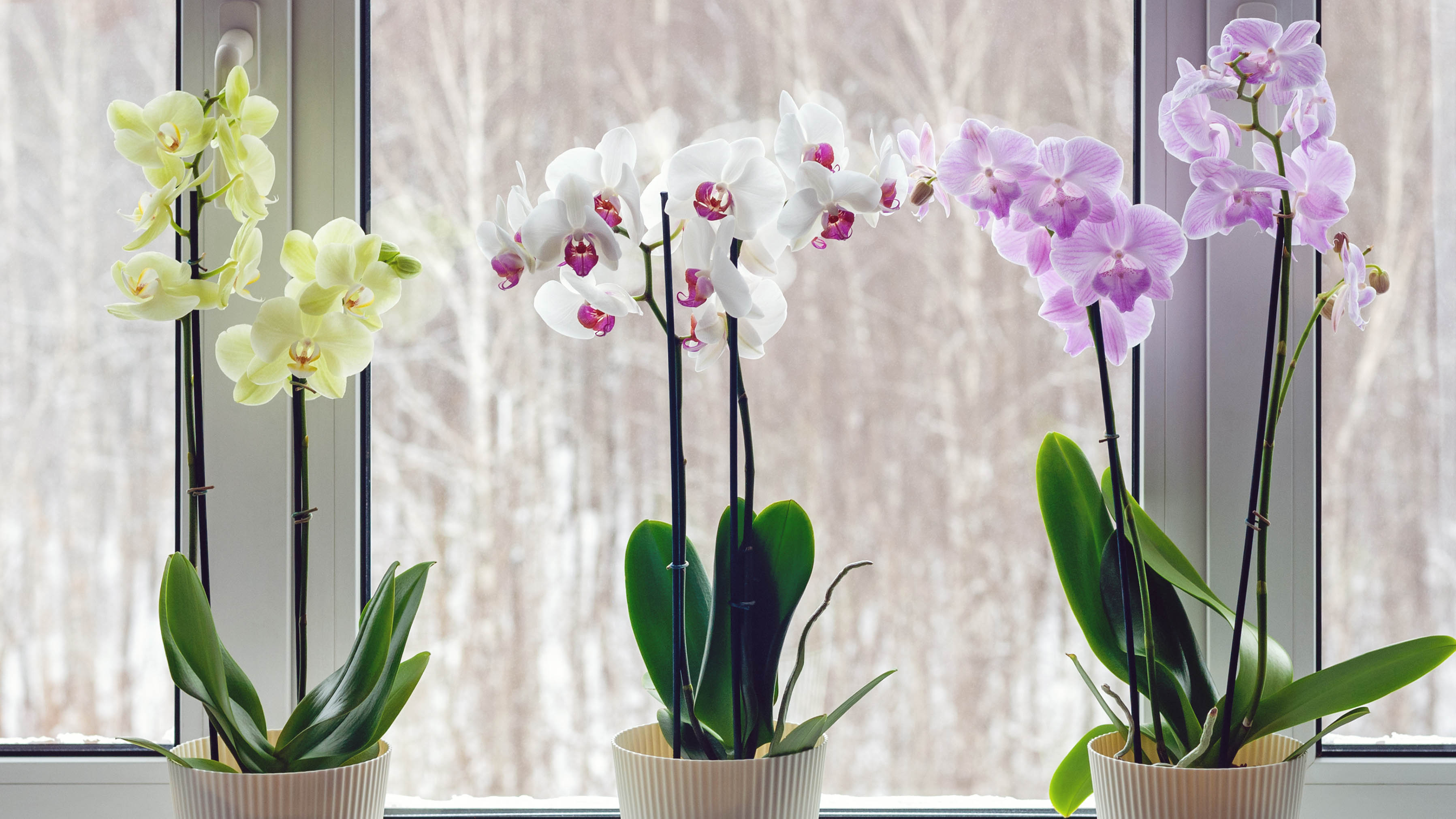
Whether you have a favorite flower or love plants that will make your house smell nicer, there are some houseplants that can really add color and visual style to your home. This is especially the case when it’s bleak and dark outside during the winter months.
Luckily, apart from colorful houseplants to warm up your home, there are plenty of flowering houseplants that can produce beautiful blooms for months — with the proper care. With their vibrant colors and eye-catching blooms, these will bring beauty and warmth to your home this season.
So if you want to bring the outdoors in, check out these best houseplants for beautiful blooms.
You might also be interested in 5 easy houseplants to grow from cuttings.
1. Bird Of Paradise
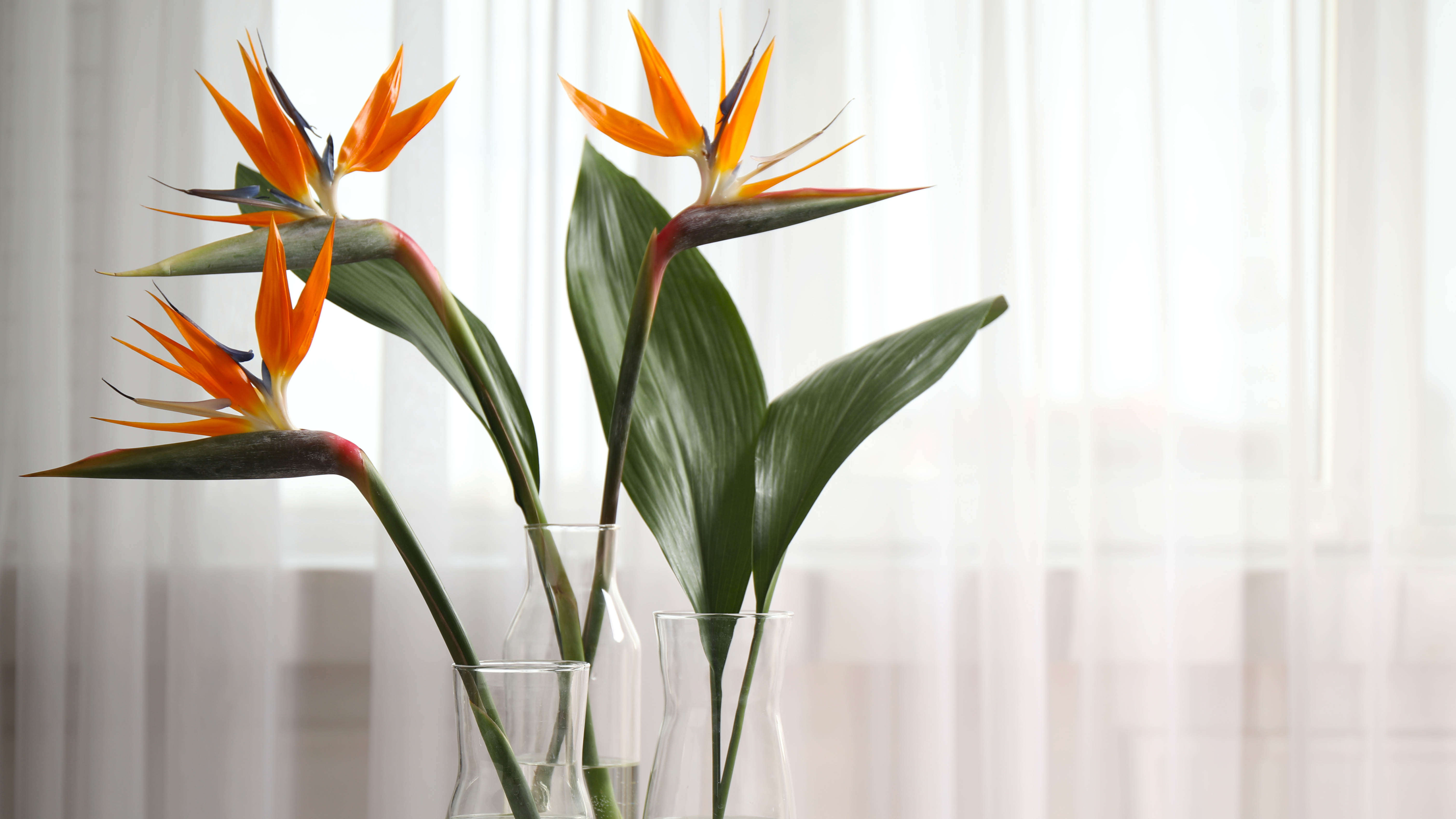
These exotic houseplants are known for their distinct bird-like shape and stunning electric blue and neon orange colors. Although not difficult to care for, these do require a bright, humid or warm atmosphere to thrive. In addition, it will need regular misting and watering, especially in spring and summer when the air is dry.
Ideally, place in humid spaces like the bathroom, kitchen, or a south facing room. Bear in mind that your Bird of paradise plant will need plenty of room to grow, as the leaves can reach up to 2m tall.
2. Orchid
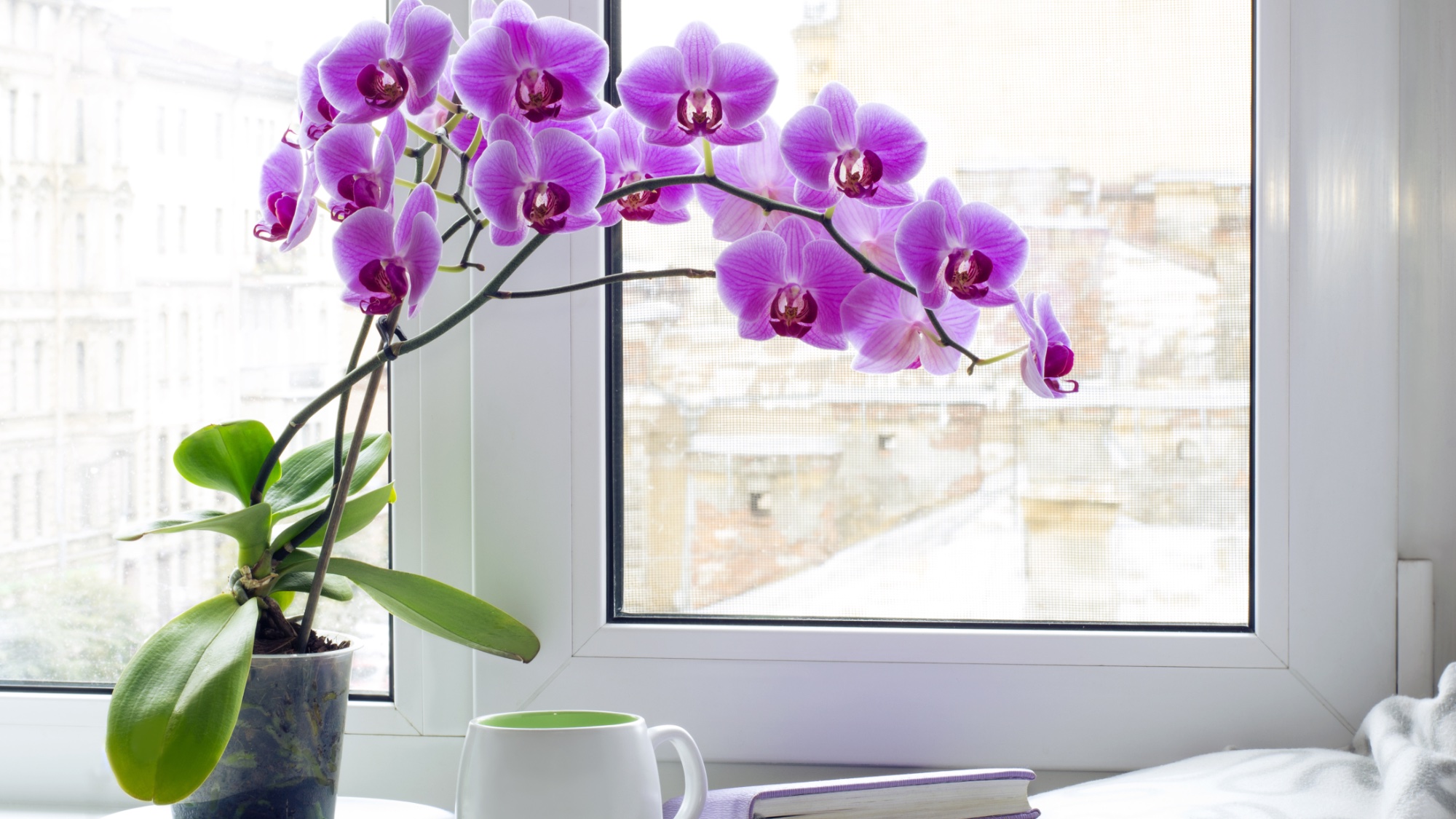
Popular orchids are available in different species and vibrant blooms, and make stunning décor feature. And while these may look delicate to maintain, orchids are pretty hardy — only requiring water once a week. Just avoid overwatering, as this will lead to root rot, and may cause it to die.
Sign up to get the BEST of Tom's Guide direct to your inbox.
Get instant access to breaking news, the hottest reviews, great deals and helpful tips.
In addition, use pots with drainage holes to allow excess water to run out of the pot, with a saucer or drip tray underneath to catch it. Typically, orchids thrive in bright, but indirect light for around six hours a day. So a windowsill can make for ideal placement.
Providing you know how to care for your orchids, it will continue to rebloom and look stunning. Just avoid these common mistakes when growing orchids.
3. Anthurium
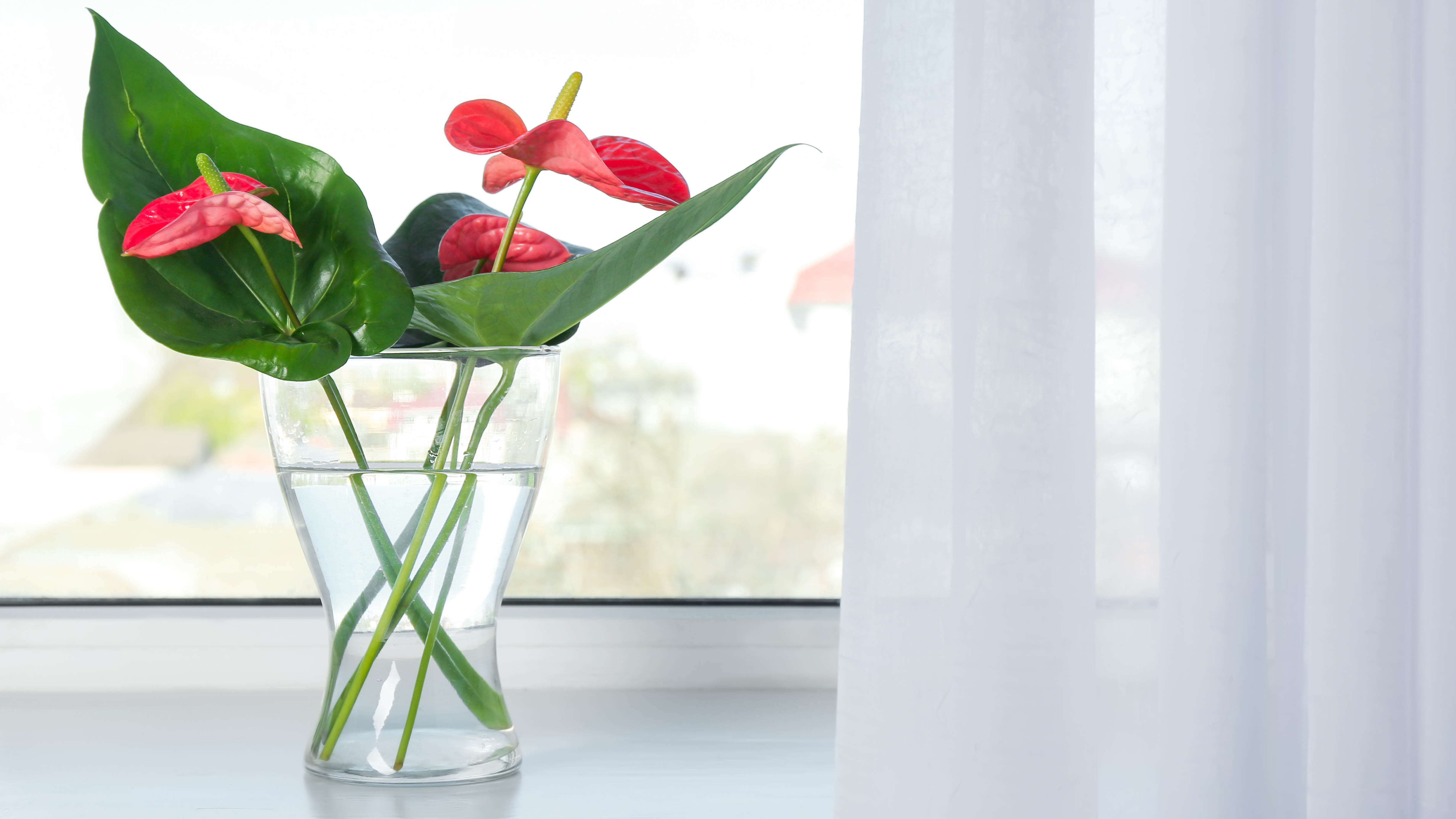
Another striking houseplant is the anthurium, which comes in vibrant colors and sizes. In fact, there are 1,000 species of flowering plants, and are also known as flamingo flowers or laceleaf plants.
With their glossy, heart-shaped leaves, anthuriums thrive in warmer conditions, and its soil needs to be moist. Just avoid overwatering it as soggy soil can make your beautiful leaves wilt. A good tip is to check if the top two inches of soil is dry with your finger tip or you could invest in a soil moisture meter like this SONKIR Soil pH Meter ($9, Amazon), which is a good indicator of when to water it.
Ideally, place in a room with medium light, and not direct sunlight. What’s more, anthuriums are slow-growers, so you’ll only need to repot about every two to three years. This will help them to develop more beautiful blooms all year.
4. Bromeliad
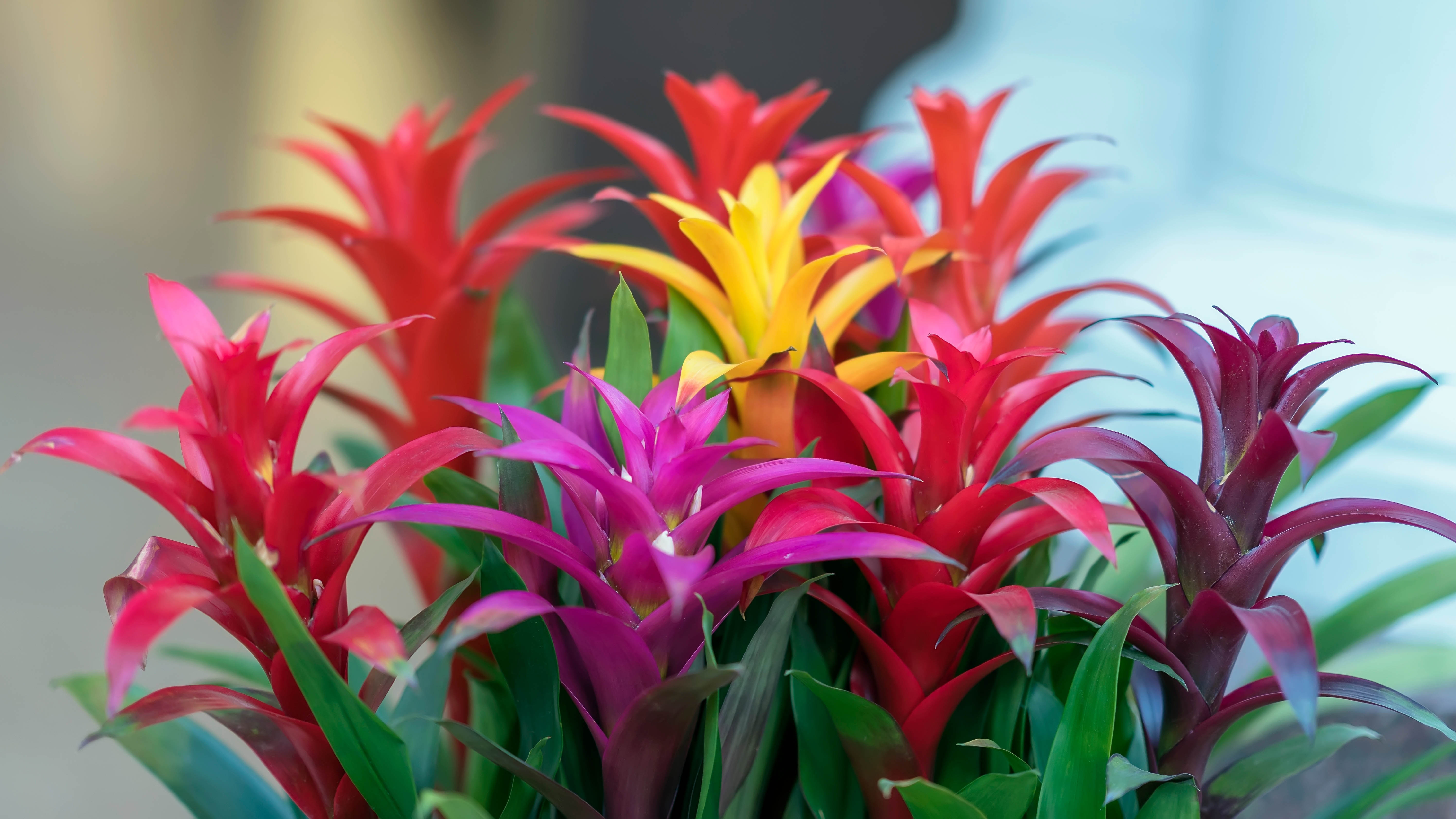
With their bright colors and sword-shaped leaves, Bromeliads will add much character to your space. In fact, these tropical plants are from the same family as pineapples, and grow naturally on the bark of trees.
The flower (rosette) requires bright yet indirect light, so ideally place on a sunny windowsill or in a warm room that gets plenty of light. In addition, they are low-maintenance and only need watering every one to two weeks. Just ensure you let the plant dry out between waterings, to prevent the risk of root rot.
Another good tip is to empty the rosette by turning the plant upside down and refilling with fresh water.
5. Peace Lily
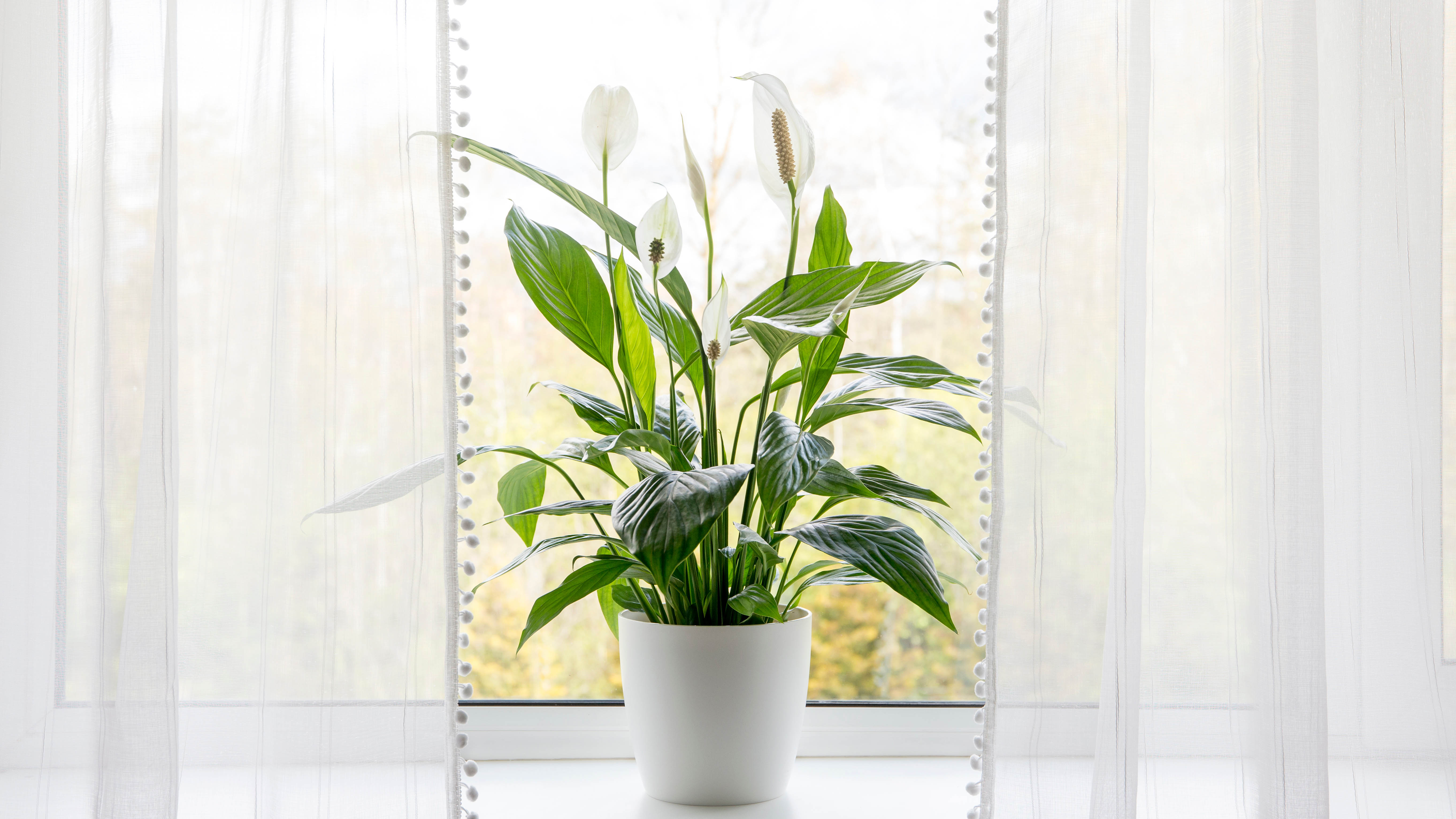
The peace lily is another beautiful indoor flowering plant that is a popular choice in home decor. With its striking combination of large white flowers and luscious leaves, it’s also pretty low maintenance to care for.
Generally, Peace lilies should be watered around about once a week, and usually around one inch of water. Always check the top soil conditions first, as you don’t want to let the soil dry out for long periods, or overwater.
Although they don't need direct sun, they prefer bright, indirect light from a nearby window, and thrive in humidity. In fact, these are the ideal houseplants to brighten up your bathroom or kitchen. What’s more, the peace lily is one of the 7 best plants to reduce indoor air pollution, so it’s a win-win!
6. Cyclamen
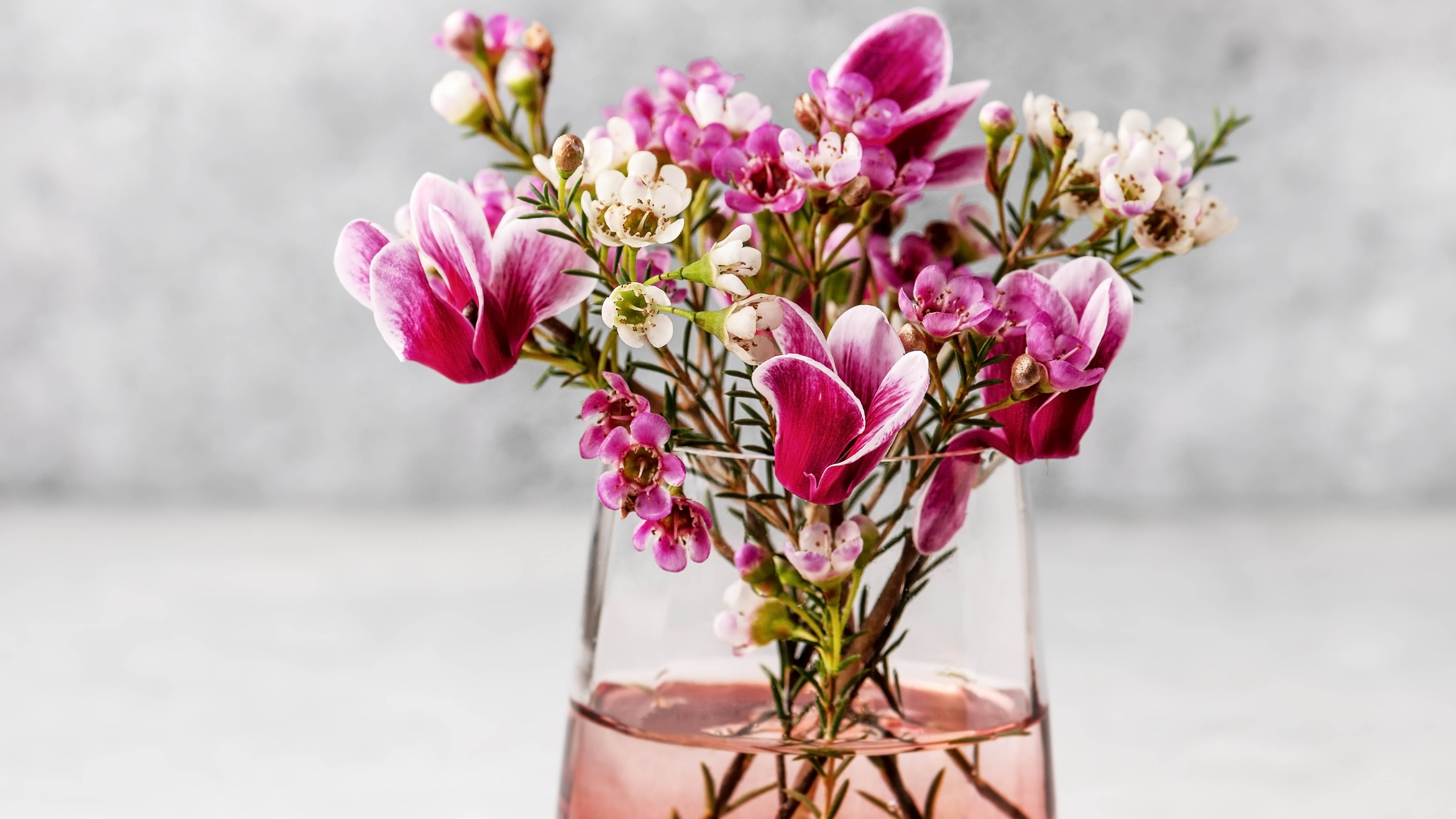
With their pretty butterfly-like flowers, cyclamen can add a burst of vibrant color to any space. From bold red and neon pinks to snowy white petals, these plants can make fantastic blooms. Interestingly, most cyclamen grow to about 10cm tall, although established tubers can produce dozens of flowers at once.
These tend to thrive in bright, indirect light and in cool environments. Ideally water once a week, but less frequently during winter months. Generally, watering should be done before the tuber is completely dry. Ensure the pot has sufficient drainage holes to avoid root rot, and feed every two months with a house plant fertilizer.
7. Poinsettia
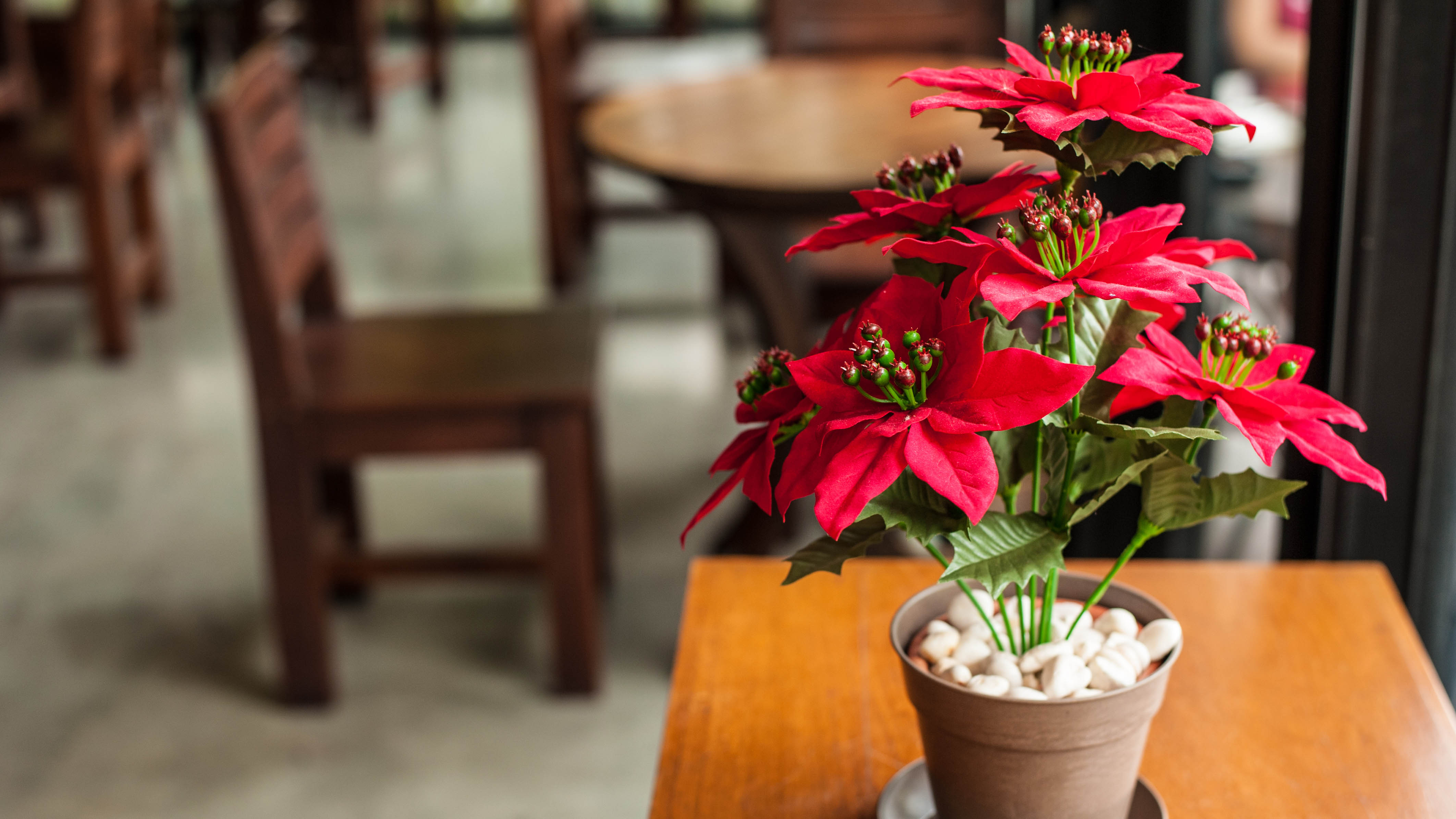
Poinsettias are usually plants that are bought for the festive season, just like the Christmas cactus, but with their vibrant, red bracts, these can add much color to your home all year round. Better still, poinsettias are relatively easy to care for — providing you get the right balance of watering.
Overwatering is one of the key mistakes for new poinsettia owners, so make sure you know how to care for a poinsettia to ensure it thrives.
Keep the soil moist, but not drenched or soggy, and avoid letting your poinsettia sit in residual water in the tray underneath. If your room is particularly warm or humid, small poinsettias may need daily watering. Whereas, larger plants may need less watering less once the temperature drops. In any case, it’s always best to keep an eye on your poinsettia regularly to calculate how often it needs watering or use a soil moisture meter.
Please note that most of these flowering houseplants can be toxic to pets, so always check the species before buying. If in doubt though, these are the best pet-safe indoor house plants.
More from Tom's Guide

As the Homes Content Editor, Cynthia Lawrence covers all things homes, interior decorating, and garden-related. She has a wealth of editorial experience testing the latest, ‘must-have’ home appliances, writing buying guides and the handy ‘how to’ features.
Her work has been published in various titles including, T3, Top Ten Reviews, Ideal Home, Real Homes, Livingetc. and House Beautiful, amongst many.
With a rather unhealthy obsession for all things homes and interiors, she also has an interior design blog for style inspiration and savvy storage solutions (get rid of that clutter!). When she’s not testing cool products, she’ll be searching online for more decor ideas to spruce up her family home or looking for a great bargain!
